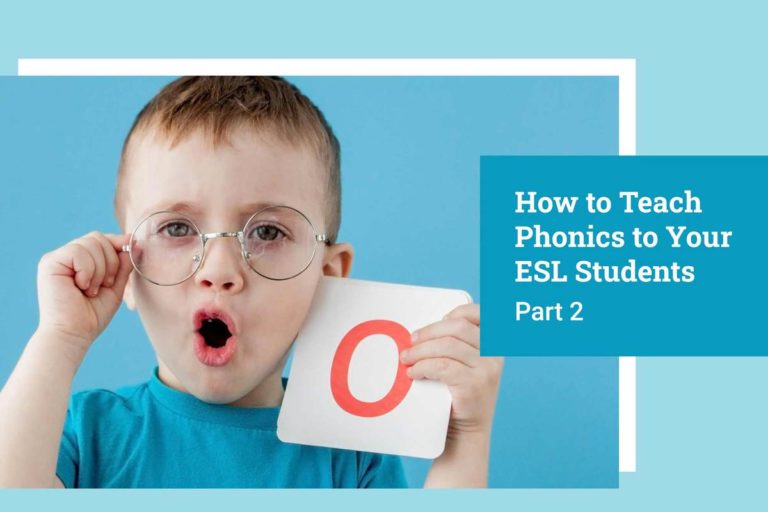Ready to start teaching English online?
Teach with VIPKidESL warm-up activities are a great way to start an English class. It is a win-win for both teachers and students.
Teachers can tune themselves in for the upcoming class and buy themselves some time. Students, especially younger ones, can have fun, get to know each other, and learn something new at the same time. Just like athletes need to warm up their muscles before their activities, students need to “warm-up” their brains. The warm-up activities should take about 5 minutes, and you can be taught either by classroom teachers or online ESL teachers.
In this article, we have gathered some engaging, informative, and fun warm-up games for ESL students as well as the warm-up exercises for kids learning languages.
ESL Warm-Up Activities
A-Z Game

Working in teams, students should come up with words that are related to a certain topic and start with each letter of the alphabet, from A to Z. For example, for the “food” topic the words would be “apple“, “butter“, “cheese“, and so on. The winning team of this ESL warmup should complete the entire alphabet first. This can also be done by one student in a tutoring session.
Organize Yourselves
During this group warm-up activity, you should tell your students to arrange themselves according to given criteria, such as age, name, the street where they live, and so on. Students should then have to tell you why they organized this way, using proper grammar.
Make The Longest Words
Write down a word of a minimum of five letters and tell your students to make up words that start with each letter of this word. It is desirable that the word has no repeating letters. The winner or the winning team should make up the longest word. For example TABLE – Terrified, Ambiguous, Blossom, Landscape, Empty. The students can also do the same with the letters of their names. It helps with ESL pronunciation lessons.
Check out these fun pronunciation games and exercises for your ESL students.
Anagrams
Mix up the letters and/or words in a sentence and encourage your students to find the right order and decipher the sentence.
Facts

Give the students any topic and suggest that they write down as many true facts as they know about this topic. For example, they can write down facts about dogs.
Fitting In
Show your students a bowl, a flower pot, a basket or any similar item, and suggest that they name the items that would fit into this bowl/pot/basket.
Odd One Out
Name or write down a range of concepts or items and tell your students to find one concept or item that does not fit in. The odd concepts and items should be somewhat related to other concepts and items in the range, but still, have some slight differences, so they should be not that easy to guess. For example, “table, chair, bed, fridge, sink” – bed is odd because in most cases you cannot find a bed in the kitchen. However, some students could also name the fridge or sink, and it makes this task a bit complicated. You can also encourage the students to make up their own range of concepts or items with odd ones.
Idioms
In this vocabulary warm-up exercise, you should give the students one word and suggest that they think of idioms that contain this word. For example, “blue” – “out of the blue“, “feel blue“, etc. They can also make up the sentences with those idioms.
Questions

Write down different questions on pieces of paper, put them in a basket, and turn on some music. Ask the students to sit in a circle and hand this basket over to each other until you stop the music. The person who is holding the basket at that moment should take a piece of paper out of the basket and answer the question.
What can you tell about cookies?
Give out cookies or other sweets to everyone, and tell the class to describe the sweets – their color, shape, etc. – and analyze their quality, such as taste, crispiness, etc. They can also tell a story about those sweets.
Categories
The leader thinks of a category, such as “fruit”. In a circle, everyone should name a fruit within a limited time period – the leader usually counts to five. If someone takes too long to give an answer or gives an incorrect answer, then that person is out and a new category begins. In the end, only one person remains.
Word chain
The students toss a ball to each other and name the words that start with the last letter of the previous word, forming the chain. For example, “ball“ – “lamp“ – “pie“, and so on.
Empty Comics
Find a comic strip and wipe out the words from the bubbles. The students should guess what the comic characters are saying.
We hope that this list of ESL warm-up activities will help you plan more effective lessons for your students and keep them engaged throughout the entire lesson, even if you teach online. If you’re looking for more, check out our guides to fun ESL games and activities, speaking activities and comprehensible input strategies and activities.
Benefits of 5 minutes warmup classroom activities
Here are a few major benefits that will convince you to include 5 minutes warmup classroom activities in your daily lesson plans.
- They are a great ice breaker – Warm-up activities can serve as a great ice breaker, which is extremely important when it comes to teaching younger students. Kids can be quite shy and hesitant to participate in a formal classroom setting, therefore, a light warmup activity can get the ball rolling. It can help you make the kids feel more comfortable and before you get on with the more formal teaching methods you can start off the day on a friendly note.
- They can help set up the pace for the entire class – Warmup activities can include things that are related to your day’s lesson. This way you will give your students an idea of what is to come and get them thinking about how they can add more value to their lesson. You can ask them to guess the topic and what it is about or other similar activities. These kinds of warmup games can spark creativity because the students will feel more involved and motivated to learn more about their lessons.
- You can create a better relationship with your students – Warmup activities are usually done in an informal setting, (such as circle time) which allows the students to let their guard down and see the teacher as a friendly person. Once they start to feel comfortable and develop a bond with you, the students may pay more attention to your lesson. They will feel more comfortable to ask questions and participate that will allow them to learn more.
What kind of warm games should you choose for your ESL class?
Yes, warm-up games have plenty of benefits and they are a great way to kick off your class. However, if you do not choose the right kind of games then instead of warming your students up they may get you to a wrong start.
Here are a few things you should consider while choosing a warm-up game/activity for your ESL class:
- They should be easy and simple – The purpose of warm-up games is to have an activity that can serve as an ice breaker, make your students comfortable and set a nice tone for the rest of your class. However, if the games you choose are too difficult to understand and follow then your students, instead of getting comfortable, may feel intimidated. Why? Because most of them may not be able not to speak English at all, therefore, a difficult warm-up activity is likely to make them think that learning the English language is not easy.
- They should be age-appropriate – Yes, warm-up games can be used for both kids and adults, however, you must choose games that are appropriate for your students. You cannot play extremely childish games with adult students and similarly anything slightly complicated or involving complex writing or reading will not work with kids.
- They should not be too long – A warm-up game should not be so long that it does not leave you any time to complete your lesson. Sure, if it is the first lesson of the semester/course then you can have a warm-up game that goes on for more than just five minutes, but for regular classes, a 5-minute game/ activity is more than enough.



